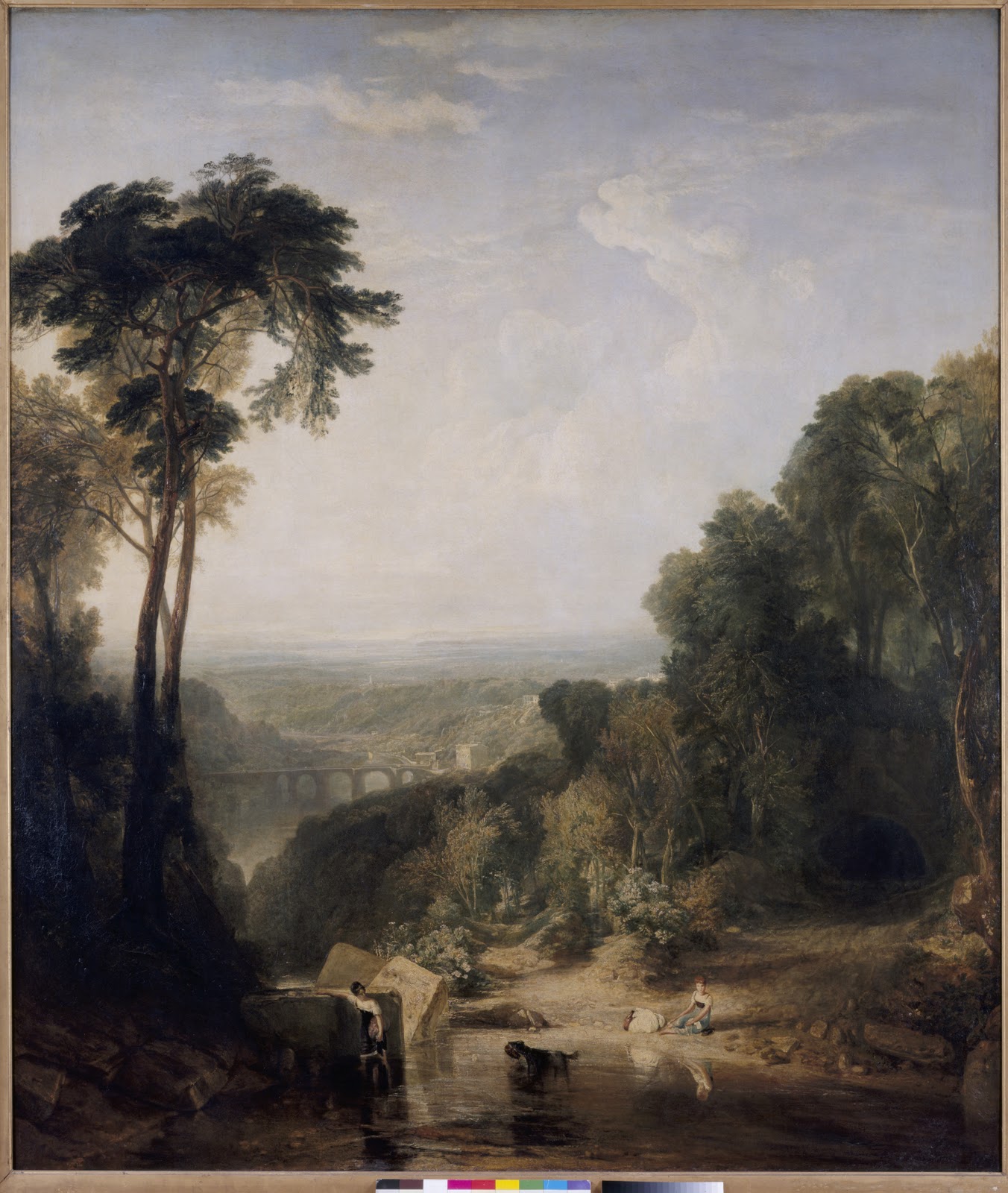Picturesque:
The picturesque is an aesthetic ideal that emphasizes a harmonious relationship with nature. The picturesque is generally pleasant to observe and has little sense of danger or tension.
Examples of the picturesque in paintings:
"Entrance to Copenhagen" by J.C. Dahl

"Crossing the Brook" by J.M.W. Turner
In this painting there is a more distinct interaction between people and nature (woman at river bank). There is also a solid structure in the background, emphasizing human beings harmonious relationship nature.

"The Wanderer Above the Sea of Fog" by Caspar David Friedrich
This painting is where picturesque and sublime meet. Nature is portrayed in a slightly more chaotic light, but the spectator is still on safe ground. Nature also borders on the sublime due to its awe inspiring characteristic.

Now for the sublime.
Sublime: Described by Victor Hugo as a combination of the "grotesque and beautiful", the sublime is an aesthetic ideal that emphasizes natures awe inspiring power and generally diminishes man to the role of a passive observer. Notice how small man is in relation to nature in both paintings.
Some examples of the sublime:
"The Great Day of His Wrath" by John Martin

"Hannibal and His Army Crossing the Alps" by J.M.W. Turner

Finally, ruins are important because they give an impression of a time of greatness that has passed. They are simultaneously a symbol of a time when the structure was great, and an aesthetic structure within themselves, presenting its own decay to the observer as an aesthetic experience.
"The Chancel and Crossing of Tintern Abbey" by J.M.W. Turner

No comments:
Post a Comment